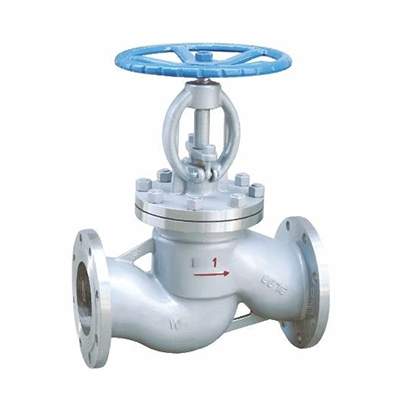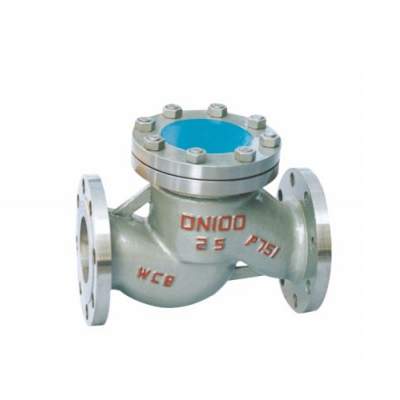Welcome to My Blog!
Before we dive into the content, I’d love for you to join me on my social media platforms where I share more insights, engage with the community, and post updates. Here’s how you can connect with me:
Facebook:https://www.facebook.com/profile.php?id=61563865935136
Now, let’s get started on our journey together. I hope you find the content here insightful, engaging, and valuable.
Introduction

Ball stop valves are vital components in fluid control systems, prized for their reliability and adaptability across a wide range of industries. These valves, engineered to regulate or completely halt the flow of liquids or gases, utilize a spherical ball with a central bore that rotates to manage flow. At Fanlei, a premier valve manufacturing company excelling in research, design, production, and sales, we are committed to delivering high-quality ball stop valves tailored to meet diverse application needs. This blog dives deep into essential facts about ball stop valves, covering their functionality, applications, and why they stand out as a preferred choice for efficient flow control. Whether you’re an engineer, procurement specialist, or industry professional, understanding the intricacies of these valves will empower you to make informed decisions. Fanlei’s expertise ensures that every valve we produce meets stringent quality standards, enhancing system performance.
What Is a Ball Stop Valve?
A ball stop valve is a quarter-turn valve that employs a pivoting ball to control the flow of fluids through a pipeline. The ball, typically crafted from robust materials like brass or stainless steel, features a hole through its center that aligns with the pipe to permit or block flow. When the valve handle is turned, the ball rotates to either align the hole with the pipe, allowing fluid passage, or position it perpendicularly, stopping flow entirely. This simple yet highly effective mechanism makes stop valves ideal for applications requiring rapid and dependable shut-off. Fanlei’s stop valves are designed with precision to ensure seamless operation. Their straightforward design minimizes maintenance needs, making them a cost-effective solution.
Key Components of a Stop Valve
The primary components of a ball stop valve include the ball, valve body, stem, seats, and handle, each playing a critical role in its functionality. The valve body encases the ball, which is connected to the handle via the stem, allowing for precise control. Seats, often made from durable materials like PTFE, ensure a tight seal when the valve is in the closed position, preventing leaks. Fanlei’s stop valves are meticulously engineered, using high-grade materials to withstand demanding conditions, ensuring both longevity and superior performance. Every component is rigorously tested to meet industry standards. This attention to detail makes Fanlei a trusted name in valve manufacturing.
How Stop Valves Work
The operation of a stop valve is remarkably straightforward, relying on a 90-degree turn of the handle to rotate the ball inside the valve body. In the open position, the bore aligns with the pipeline, allowing fluid to flow freely with minimal resistance. In the closed position, the bore is perpendicular to the pipe, creating a secure seal that blocks flow entirely. This design minimizes pressure drop and provides a reliable shut-off, making stop valves suitable for high-pressure systems. Fanlei incorporates advanced engineering to enhance the efficiency of this mechanism. Their valves are built to handle diverse media, ensuring consistent performance.
Benefits of Using Ball Stop Valves
Ball stop valves offer a multitude of advantages, cementing their status as a staple in industries such as plumbing, oil and gas, and manufacturing. Their durability, ease of operation, and adaptability make them an essential component in fluid control systems. Fanlei’s commitment to quality ensures that our stop valves deliver unmatched reliability. These benefits translate into cost savings and operational efficiency for users.
Durability and Longevity
Ball stop valves are constructed to endure, with materials like stainless steel and brass offering excellent resistance to corrosion and wear. This durability translates into a longer service life, even in challenging environments. Fanlei’s stop valves undergo stringent quality control processes to ensure they meet global standards, providing reliable performance over extended periods. Our valves are designed to minimize replacement costs. Choosing Fanlei means investing in long-term system reliability.
Ease of Operation
The quarter-turn mechanism of a ball stop valve allows for swift opening and closing, significantly reducing operational time and effort. This feature is particularly valuable in emergency situations where immediate shut-off is critical to prevent system failures. Fanlei’s ergonomic handle designs enhance user experience, ensuring smooth operation. This ease of use improves workplace efficiency. Our valves are engineered to perform consistently under varying conditions.
Versatility Across Applications
From residential plumbing to heavy-duty industrial pipelines, stop valves adapt seamlessly to various media, including water, gas, and oil. Their ability to handle a wide range of pressures and temperatures makes them a versatile choice for diverse applications. Fanlei’s stop valves are customized to meet specific industry needs, ensuring optimal performance. This adaptability reduces the need for multiple valve types. Our solutions cater to both small-scale and large-scale operations.
Common Applications of Ball Stop Valves
Ball stop valves are employed across a broad spectrum of industries due to their robust design and dependable performance. Their ability to provide secure shut-off and withstand demanding conditions makes them indispensable. Fanlei’s valves are tailored to excel in these applications. Below are some key sectors where stop valves shine.
Plumbing and Water Systems
In residential and commercial plumbing, ball stop valves regulate water flow to fixtures such as sinks, toilets, and water heaters. Their leak-proof design ensures efficient water management, conserving resources and preventing waste. Fanlei emphasizes precision in its valve designs to meet the needs of modern plumbing systems. Our valves enhance system reliability. They are a top choice for contractors and homeowners alike.
Oil and Gas Pipelines
The oil and gas industry depends on stop valves for their ability to manage high-pressure fluids and withstand corrosive environments. These valves ensure the safe and efficient transport of hydrocarbons, critical to operational success. Fanlei’s stop valves are engineered to meet the rigorous demands of this sector, offering robust performance. Our products comply with industry safety standards. They are trusted by leading energy companies.
Industrial Manufacturing
In manufacturing plants, stop valves control the flow of liquids and gases in automated systems, ensuring smooth production processes. Their reliability minimizes downtime, boosting productivity. Fanlei’s valves are designed to meet the stringent requirements of industrial applications, delivering consistent performance. Our solutions support complex manufacturing setups. They are built to handle high-volume operations.
Ball Stop Valve Specifications and Standards
| Specification | Description |
|---|---|
| Material | Brass, stainless steel, or carbon steel |
| Size Range | 1/4 inch to 12 inches (DN6 to DN300) |
| Pressure Rating | Up to 1000 PSI (PN63) |
| Temperature Range | -20°C to 200°C (-4°F to 392°F) |
| End Connections | Threaded, flanged, or welded |
| Operation | Manual (lever handle) or actuated (electric/pneumatic) |
| Standards | API 6D, ASME B16.34, ISO 17292 |
This table outlines typical specifications for ball stop valves, which vary based on application requirements. Fanlei ensures all valves comply with international standards like API 6D and ASME B16.34, guaranteeing quality and safety. Our rigorous testing processes ensure compliance. Fanlei’s valves are designed for easy integration into existing systems.
Types of Ball Stop Valves
Ball stop valves are available in various configurations to suit specific operational needs. Understanding these types is essential for selecting the most appropriate valve for your system. Fanlei offers a comprehensive range to meet diverse requirements. Each type is optimized for performance.
Full Port vs. Reduced Port
Full port ball stop valves feature a bore size that matches the pipe’s diameter, minimizing flow restriction and ensuring maximum throughput. Reduced port valves, with a smaller bore, are suitable for applications where flow rate is less critical, offering cost savings. Fanlei provides both options, allowing customers to choose based on their specific needs. Our full port valves are ideal for high-flow systems. Reduced port valves offer economical solutions for smaller setups.
Manual vs. Actuated
Manual ball stop valves rely on a handle for operation, offering simplicity and reliability for smaller systems. Actuated valves, equipped with electric or pneumatic actuators, enable automated control, ideal for remote or frequent operation. Fanlei integrates advanced actuation technology into its valve designs, enhancing automation capabilities. Our actuated valves support smart systems. Manual valves remain a cost-effective choice.
Floating vs. Trunnion-Mounted
Floating ball stop valves use fluid pressure to create a seal, making them suitable for low to medium-pressure applications. Trunnion-mounted valves, with additional support for the ball, excel in high-pressure systems, ensuring stability. Fanlei’s trunnion-mounted ball stop valves are engineered for heavy-duty use, delivering exceptional performance. Our floating valves are lightweight yet reliable. Both types are built to last.
Installation and Maintenance Tips for Ball Stop Valves
Proper installation and maintenance are critical to maximizing the lifespan and performance of ball stop valves. Adhering to best practices ensures optimal functionality. Fanlei provides comprehensive support to simplify these processes. Our valves are designed for ease of use.
Installation Best Practices
Ensure the ball stop valve is installed in the correct orientation, with the flow direction matching the valve’s design to prevent operational issues. Use appropriate tools to avoid damaging the valve body or seals during installation. Fanlei provides detailed installation guides to ensure a seamless setup process. Our technical support team is available for assistance. Proper installation enhances valve longevity.
Routine Maintenance
Regular inspections for leaks, corrosion, or wear are essential to maintain stop valve performance. Lubricate moving parts as recommended and replace worn seals promptly to prevent failures. Fanlei’s valves are designed for easy maintenance, reducing downtime and operational costs. Our maintenance guides simplify upkeep. Proactive care extends valve life significantly.
Challenges and Solutions in Ball Stop Valve Usage

While ball stop valves are highly reliable, certain challenges may arise during their use. Addressing these proactively ensures uninterrupted performance. Fanlei’s innovative solutions mitigate common issues. Our valves are built to overcome these challenges.
Corrosion in Harsh Environments
In corrosive environments, such as those involving seawater, dezincification can weaken brass valves, compromising their integrity. Using stainless steel or specially coated valves, as offered by Fanlei, effectively mitigates this issue, ensuring durability. Our corrosion-resistant valves are ideal for marine applications. They maintain performance in tough conditions.
Leakage Issues
Improper installation or worn seats can lead to leaks, reducing system efficiency. Regular maintenance and selecting high-quality stop valves from reputable manufacturers like Fanlei prevent such problems. Our precision-engineered seals ensure leak-proof performance. Fanlei’s quality assurance minimizes leakage risks.
Conclusion
Ball stop valves are essential for efficient and secure fluid control across a wide range of industries, from plumbing to oil and gas. Their durability, ease of operation, and versatility make them a top choice for professionals seeking reliable flow control solutions. At Fanlei, we leverage our extensive expertise in valve manufacturing to deliver high-quality ball stop valves that adhere to international standards and exceed customer expectations. Our commitment to innovation ensures that every valve performs flawlessly in its intended application. For durable, high-performance valves tailored to your specific needs, contact us today to explore Fanlei’s extensive product range and elevate your fluid control systems.
FAQ
What is the difference between a ball stop valve and a gate valve?
A ball stop valve uses a rotating ball for quick shut-off, requiring only a quarter-turn, while a gate valve employs a sliding gate, needing multiple turns to operate. Ball stop valves are faster and better suited for frequent operation. Fanlei’s ball stop valves offer superior speed. They are ideal for dynamic systems.
Can ball stop valves be used for throttling?
Ball stop valves are primarily designed for on/off control, not precise throttling, as partial opening can cause wear. For accurate flow regulation, globe valves are recommended, but Fanlei’s V-port ball stop valves offer limited throttling capabilities. These specialized valves balance control and durability. Consult Fanlei for tailored solutions.
How do I choose the right material for a ball stop valve?
Material selection for a ball stop valve depends on the fluid, temperature, and pressure of the application. Brass is ideal for water, while stainless steel suits corrosive media like chemicals. Fanlei’s experts provide personalized recommendations to ensure optimal material choice. Our valves cover a wide range of media. Contact us for guidance.
